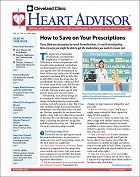Tight control of systolic blood pressure reduces the risk of developing left ventricular hypertrophy (LVH) compared to the more common, slightly higher systolic blood pressure control. In a study published in the Aug. 15 issue of the Lancet, researchers found that lowering systolic (the top number) to 130 mm Hg instead of the more common target of 140 mm Hg reduced the risk of electrocardiographic LVH by 37 percent. The risk of heart attack, stroke, angina and other clinical events was also noticeably lower in the group of study subjects whose blood pressure was brought below 130. LVH is a thickening of the heart muscle around the left ventricle and can be a marker for several forms of heart disease. LVH can also be reversed, usually due to lowering blood pressure. Researchers warned that lowering systolic pressure below 130, and formally altering existing guidelines, requires more research, and your particular target blood pressure levels should be discussed thoroughly with your doctor.
To continue reading this article or issue you must be a paid subscriber.
Sign in





